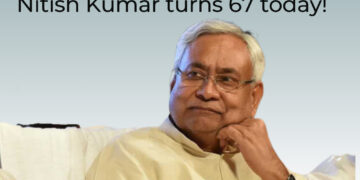RTIwala Explains Sinha Vs. Jaitley: The debate on the state of the economy of the country has turned fiercely delicate. Gone are the days when opposition parties rose in revolt. This time it’s one of the members of the ruling party government.
Former Finance Minister Yashwant Sinha wrote an article in the Indian Express. This article in particular raised several questions about the state of economy blaming Finance Minister Arun Jaitley for, what he believed; fiscal chaos the country finds itself into.
Politically, Yashwant Sinha gave a shot in the arm of the Congress. Suddenly a torrent of criticism poured in from Congress leaders of all ranks. Former Finance Minister P Chidambaram, while backing Yashwant Sinha’s claim, said, “The government is completely clueless about what is causing the economic decline.”
ALSO READ: On Gandhi Jayanti, Rw Reveals Top 10 Unknown Facts of Mahatma Gandhi
Now the whole political and extra dramatically charged scenario did not end there. Soon, Yashwant Sinha’s son and Union Minister Jayant Sinha wrote an article in the Times of India refuting the claims made by his father. He emphasized that the fiscal health of the country was sound and structural reforms introduced by the government had impacted some sectors temporarily.
These series of events have launched a volley of questions. Why is the outcome of a steady decline in GDP growth over five quarters? Why is there no increase in private investment? Why is credit growth to industry negative? Why is there a poor demand for electricity and plant load factor at 50-60 percent?

Finally, Jaitley hit back saying that he did not have the luxury as yet of being a former Finance Minister, nor did he have the luxury of being a former Finance Minister who has turned a columnist. This political game is taking grave colors.
Also Read: Rw Interviews Srijan Pal Singh-The Shadow of India’s Missile Man
Sinha Vs Jaitley: On Economy And Government
But, in the personal blame game, the real debate on the health of India’s economy seems to have taken a back seat. The official figures and estimates by experts don’t present a glowing picture of the economy. Even the government realizes this.
Prime Minister Narendra Modi only early this week revived his economic advisory council. The economic advisory council had been abolished soon after the Narendra Modi government was sworn in three years ago. This in itself is a big move. The reconstitution of the economic advisory council is significant as it came on the back of six consecutive quarters of declining growth after achieving the GDP growth rate of 9.1 in the first quarter of 2016. The Lok Sabha elections are less than two years away. This calls for the urgent corrective measure by the government to put GDP growth rate figures back on the northern flight.
Sinha Vs. Jaitley: The Meaning of Declining Growth Rate
At 5.7 percent, India has seen the slowest quarterly economic growth since the Narendra Modi government came in power in 2014. Non-government sector forms about 90 percent of India’s GDP. But, during the April-June period, this portion of the economy grew at 4.3 percent only.

The manufacturing sector grew at 1.2 percent while construction witnessed a 2 percent growth rate. Industry, as a whole, grew at merely 1.6 percent. Economists are of the view that given the scale of economies, India’s GDP needs to grow at over seven percent for an effective fight against poverty. It is estimated that if India has to enter the club of the average high-income country by 2040, the GDP needs to grow at over nine percent for the next 23 years. It seems like a farfetched dream, in this moment.
ALSO READ: Rw Interviews Gaurav Munjal – The Other Salman Khan of India
In the past year, the government has introduced two major reforms: demonetization and the goods and services tax. Both were introduced as course correction measures for the Indian economy. But, these steps have vastly impacted mostly unorganized sectors which traditionally employed a huge percentage of the workforce. A lot of commotion and rage came over the entire business and corporate sector, most of whom, ridiculed the moves.
Demonetisation and GST have led to a loss of lakhs of jobs in the real estate and construction sector.
Cloth industry including apparel manufacturing, leather industry and the like have also been impacted by the course-correction steps taken by the government. Some reports for 2015-16 suggest that in urban areas only three out of five job seekers got employment throughout the year. In rural areas, the ratio changed to only one in every two.
[amazon_link asins=’9350354500,B01NAYZR94,B01N174MD8,9351865878′ template=’ProductCarousel’ store=’wwwrtiwalain-21′ marketplace=’IN’ link_id=’c3ccc05b-aa0a-11e7-b463-132f4a580741′]
Sinha Vs. Jaitley: On Growing Inequality
As the focus has been on the faster pace of GDP growth since liberalization, India has seen growing inequality.
In the 1930s, one percent of income taxpayers pocketed about 21 percent of total earnings by all wage earners. It dropped to 6 percent in 1980s. But, currently, it is at 22 percent. The researchers also said that India is one of the countries where income inequality has increased at a greater pace in the past 30 years. However, the future outlook is not bad with global agencies predicting faster growth rates for India’s GDP. According to a Morgan Stanley report, India’s GDP could reach USD 6 trillion in ten years.
The Morgan Stanley has referred to economic reforms introduced by the Narendra Modi government in positive terms. The report says that digitisation of Indian economy following demonetisation and GST rollout will give a boost of 50-75 basis points to GDP growth in the coming decade.
We hope, we truly get to see Acche Din rather the Indian version of Game of Thrones.
(Inputs by Gehna Kundra)
















































